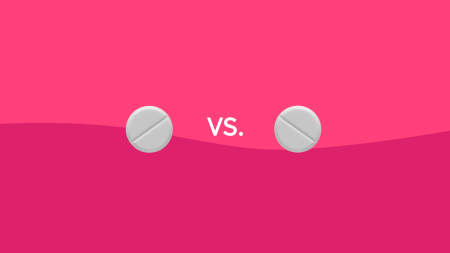Soma: What is it, side effects, and interactions
Soma is a drug that doctors prescribe for muscle pain and discomfort. It has sedative effects and can be habit-forming. Therefore, doctors recommend taking it for short periods to avoid dependence.
Soma is also a medication that some people can take recreationally. It has sedative effects and alters the activity between brain neurons and the spinal cord.
This article looks at Soma, its uses, side effects, and interactions with other drugs. It also advises on avoiding dependence and answers some frequently asked questions.
According to the Drug Enforcement Administration, Soma is the trade name for the drug carisoprodol. This medication is helpful when people combine it with rest and physical therapy to relieve painful musculoskeletal conditions.
According to a 2021 article, the manufacturer of Soma markets this drug as a muscle relaxant. Its parent compound is a benzodiazepine, which is in the class of tranquilizer medications.
Soma comes in tablet form and was first available as a generic medication in the United States in 1959.
Learn more about benzodiazepines.
Soma can relax muscles after strains, sprains, and other muscle injuries. This, together with other forms of muscle relaxation, can help reduce pain until the body heals.
However, Soma does not do this by directly relaxing the skeletal muscles. Instead, studies indicate that it alters the activity between the spinal cord and brain neurons. This makes the medication work in a similar way to benzodiazepines, providing therapeutic and soothing properties.
The sedative properties of Soma can complement pain treatment in combination with other treatments, medications, or procedures. Its primary substance is meprobamate, a controlled tranquilizer. However, meprobamate can be habit-forming.
Some people take Soma recreationally for its sedative effects, but they can develop a dependency with repeated use.
The elimination half-life of Soma is around 2 hours, meaning it takes 2 hours for the drug in a person’s system to reduce by half. However, the half-life of meprobamate is 10 hours.
This means meprobamate can accumulate in someone’s system if they take several doses over the course of a day. This increases the chance of side effects and the potential for dependency.
Additionally, people with certain conditions may metabolize Soma and meprobamate more slowly than others. Therefore, the drugs remain in their bodies for longer, increasing the chance of adverse effects.
The package leaflet recommends that a person does not take the drug for more than 2–3 weeks to minimize side effects.
Side effects of carisoprodol include:
- drowsiness
- dizziness
- headaches
- sedation
- impairment of mental and physical activity, such as driving
- euphoria
- anxiety and depression
- memory loss
- agitation and aggression
- insomnia
- social withdrawal
People consuming the drug excessively can also experience high blood pressure.
Overdosing on Soma has numerous side effects, including:
- blurred vision
- muscular incoordination
- hallucinations
- headaches
- confusion
- coma
- seizures
- agitation
- tremor
- hives
If people suddenly stop taking Soma after taking it for a prolonged time, they may experience withdrawal symptoms.
According to the National Library of Medicine (NLM), people should avoid drinking alcohol while taking Soma. Additionally, the Food and Drug Administration (FDA) lists the following drugs that can interact with this medication:
- alcohol
- benzodiazepines
- opioids
- tricyclic antidepressants
Some people combine Soma with opioids and benzodiazepines to increase the “high” they feel from the drugs. However, these combinations can lead to cumulative sedative effects. Soma can also interact with aspirin and lead to negative effects.
Doctors advise that people should not take Soma for more than 2–3 weeks at a time. They should also not take it if they are under 16 or over 65 years of age.
A healthcare professional will check a person’s medical history and any medications they are taking before prescribing Soma. They need to be sure that individuals have no history of drug dependence and that the drug will not cause adverse health effects.
Below are answers to some frequently asked questions about Soma.
Where can I find help and information?
A person should discuss their Soma prescription with a doctor to ensure they understand how much to take and how long they will take the drug. They can also read the drug label to check for potential side effects.
Anyone worried about drug dependence can contact the Substance Abuse and Mental Health Services Administration (SAMHSA). SAMHSA’s national helpline is free, confidential, and open all day, every day of the year. A person can call 1-800-662-HELP (4357) or contact their free, confidential treatment referral and information service via text message.
Is it safe to use Soma while pregnant?
Soma is pregnancy category C, which means there may have been adverse effects of the drug observable in animal studies. Alternatively, this classification means that research on pregnant individuals has been limited or inconclusive. However, the NLM says some studies suggest the drug shows up in the placenta and can negatively affect fetal growth and postnatal survival.
People who are pregnant, breastfeeding, or planning to become pregnant, should avoid taking Soma. Human studies also show that it is detectable in breastmilk, and a person’s breast milk production could decrease. Additionally, doctors need to monitor infants who have had exposure to Soma due to the risk of sedation.
Soma is the brand name of the drug carisoprodol. It can benefit those with musculoskeletal pain by acting as pain relief or a tranquilizer.
However, Soma can be addictive, and some people take it recreationally for its sedative effects. Its primary ingredient, meprobamate, is a controlled substance. This is due to its ability to affect brain receptors, which can lead to dependence and misuse.
Soma can cause a range of side effects. Doctors recommend that people take the drug for no longer than 3 weeks to avoid side effects and dependence.








